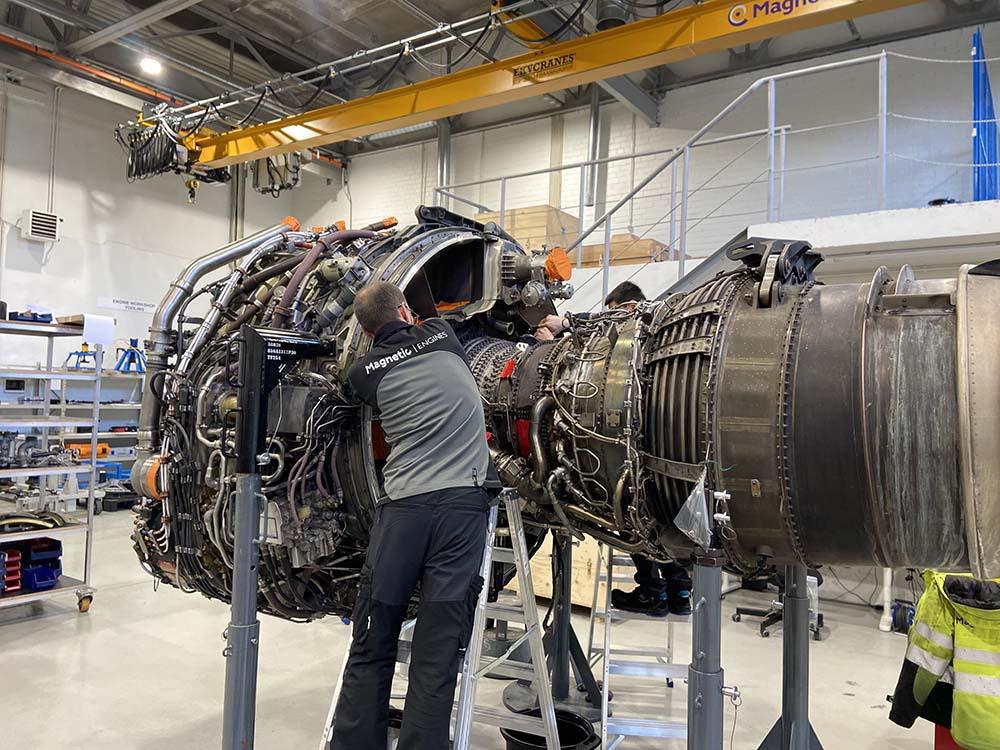
The market recovery for CFM56-5B engines will reach the CFM56-7B level by the middle of 2024, according to opinions at Magnetic MRO. However, long turnaround times for material repairs are still a huge headache for full-performance shop visits, and the situation will continue to be critical in 2024.
“As an alternative, hospital repairs with smaller work scopes and quicker turnaround times (TAT) will continue to be a solution to avoid substantial financial and time investments into full-performance shop visits,” says Laura Roke, business development manager at Magnetic Group and sales executive at Magnetic Engines.
With more than 24,000 CFM56 engines in operation, at least 11,000 have not had their shop visits yet, according to Roke. Industry observations also suggest these shop visit numbers are at the healthiest level they have been for some time and used serviceable material (USM) demand continues to rise. CFM calculates around 2,000 CFM56 shop visits were expected throughout 2023 and that number is forecasted to remain similar in 2024.
In 2022 Magnetic MRO had a sizable flow of CFM56-3s because of increased demand from cargo operators and, accordingly, 60% of repairs were for CFM56-3s and 40% were for CFM56-5Bs and -7Bs. In 2023, the picture started to change, with around 43% of repairs for CFM56-3s and 57% of repairs for CFM56-5Bs and -7Bs. “We can see that passenger operators have returned all their narrowbody aircraft back to service and are hungry for more, driving up lease rates,” says Roke. “Also, for the first time, we noticed that CFM increased the catalog list price in August.”
Last year, Magnetic identified impactful factors that instigated notable material increases for items such as fan module USM. The continued staff shortage and the fact that CFM could not deliver new Leap engines as planned for the Boeing 737 MAX and Airbus A320 family Neos were all flagged as issues. This meant all operators who expected new 737 MAXs and A320neos to replace their 737NGs and A320 family aircraft had to squeeze more cycles out of CFM56-5B and -7B engines, resulting in more top case or bottom case repairs and higher demand for high-pressure compressor blades.
Magnetic observed in 2023 that the CFM56-3’s spare parts price growth rate had overshot CFM56-5Bs and CFM56-7Bs. For example, prices rose 40-50% compared to 2022 for the CFM56-3's low-pressure turbine stage one nozzle guide vane, while the price for the CFM56-5B and -7B’s low-pressure turbine stage one nozzle grew 10-25%.
“The explanation for this scenario is simple—cargo operators are still flying with 737 Classics, and not many of those engines are left in the market to tear down, plus the TAT for the parts repair doubled or even tripled,” says Roke. “Yet, industry trends and cargo operator insights, in parallel, indicate an increase in vintage aircraft retirement, which will lead to market changes. This means, potentially, that cargo operators will start using the 737NG and A320 family aircraft more actively.”
Magnetic also observed a rise in engine trading and saw CFM56-7B prices increase by 20-30% in 2023 compared to the previous year, with prices continuing to grow. Roke believes the outlook for the CFM56 market in 2024 will be challenging but expects a transformational year with plenty of opportunities.





